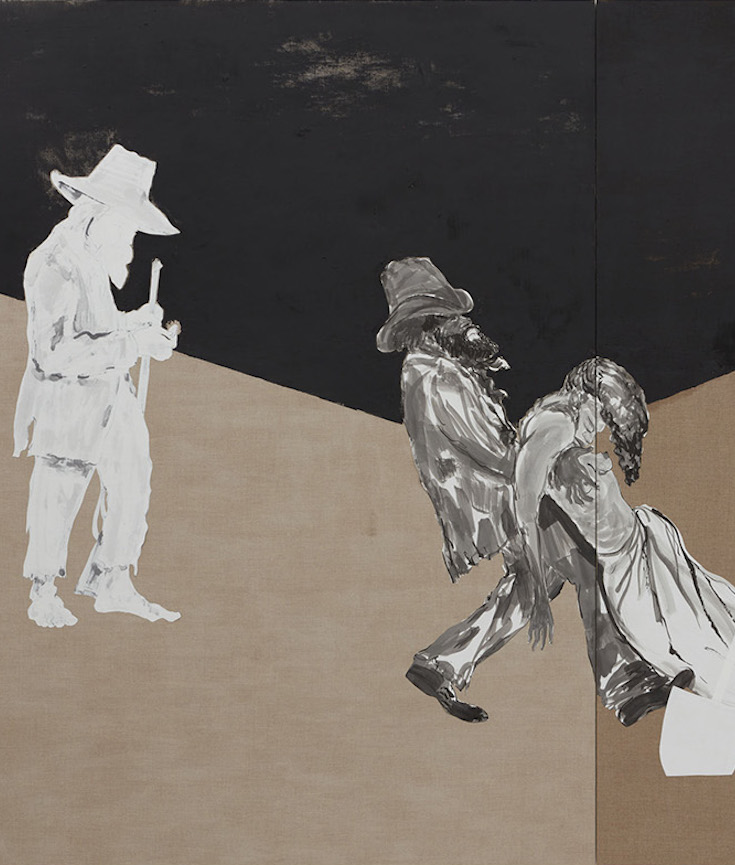[dropcap]Atop[/dropcap] Kara Walker’s large-scale drawing “The Pool Party of Sardanapalus (after Delacroix, Kienholz)” (2017), currently on view at Sikkema Jenkins, a mammy reclines; below, a group of young girls pull the entrails from a white man held down on the ground. Nearby, a hooded black male wields a shank against another black man, and a white man in a corset stabs a black male in the chest. On the outskirts of the composition, other characters are either oblivious, witnessing these acts, or simply turning away. Here, Walker adapts Delacroix’s 1827 painting, fixating on his depiction of the Assyrian king’s indifference to human life. Not dissimilar to Sardanapalus’s uncaring disposition, the work alludes to a 2015 incident in McKinney, Texas, where a white police officer, responding to a disturbance call about a neighborhood pool party, body slammed a young black girl in her bathing suit, and pulled a gun on two young boys who came to her defense. The cop, Eric Casebolt, not only used excessive force, his actions highlighted the denial of innocence to black children, who are criminalized early and often because of the color of their skin. Walker’s twisted, draconian pictures are a cypher for the present moment inasmuch as they skeptically obscure the possibility of alternative futures for our nation. [mc4wp_form id=”6042″]
 The (Private) Memorial Garden of Grandison Harris (2017) | Kara Walker
The (Private) Memorial Garden of Grandison Harris (2017) | Kara Walker
 The Pool Party of Sardanapalus (2017) | Kara Walker
The Pool Party of Sardanapalus (2017) | Kara Walker
 “U.S.A. Idioms” (2017) | Kara Walker
“U.S.A. Idioms” (2017) | Kara Walker
NATIONAL MUSEUM OF AFRICAN AMERICAN HISTORY & CULTURE | WASHINGTON, DC
The National Museum of African American History and Culture is the only national museum devoted exclusively to the documentation of African American life, history, and culture. It was established by Act of Congress in 2003, following decades of efforts to promote and highlight the contributions of African Americans. To date, the Museum has collected more than 36,000 artifacts and nearly 100,000 individuals have become charter members. The Museum opened to the public on September 24, 2016, as the 19th and newest museum of the Smithsonian Institution. (Website).


You must be logged in to post a comment.